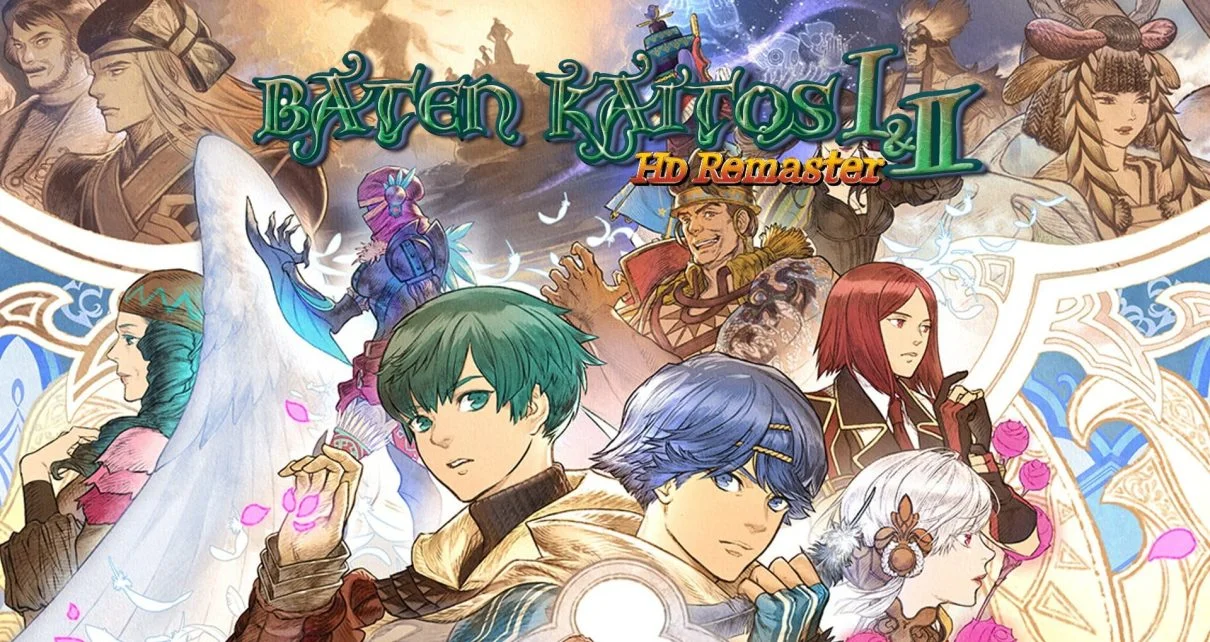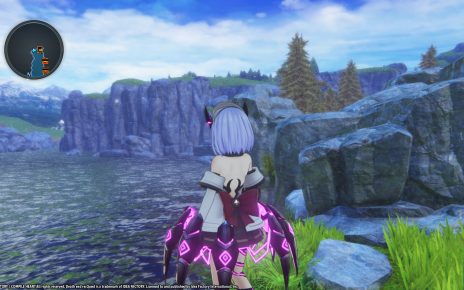Baten Kaitos is a title that I vaguely remember from its GameCube origins. I’ve seen the name over the years, but something about it just never stuck. Interesting name aside, it’s time to have a look at the Baten Kaitos I & II HD Remaster collection to see if I missed out on a memorable time or if the name is the first indicator that this isn’t going to stick.
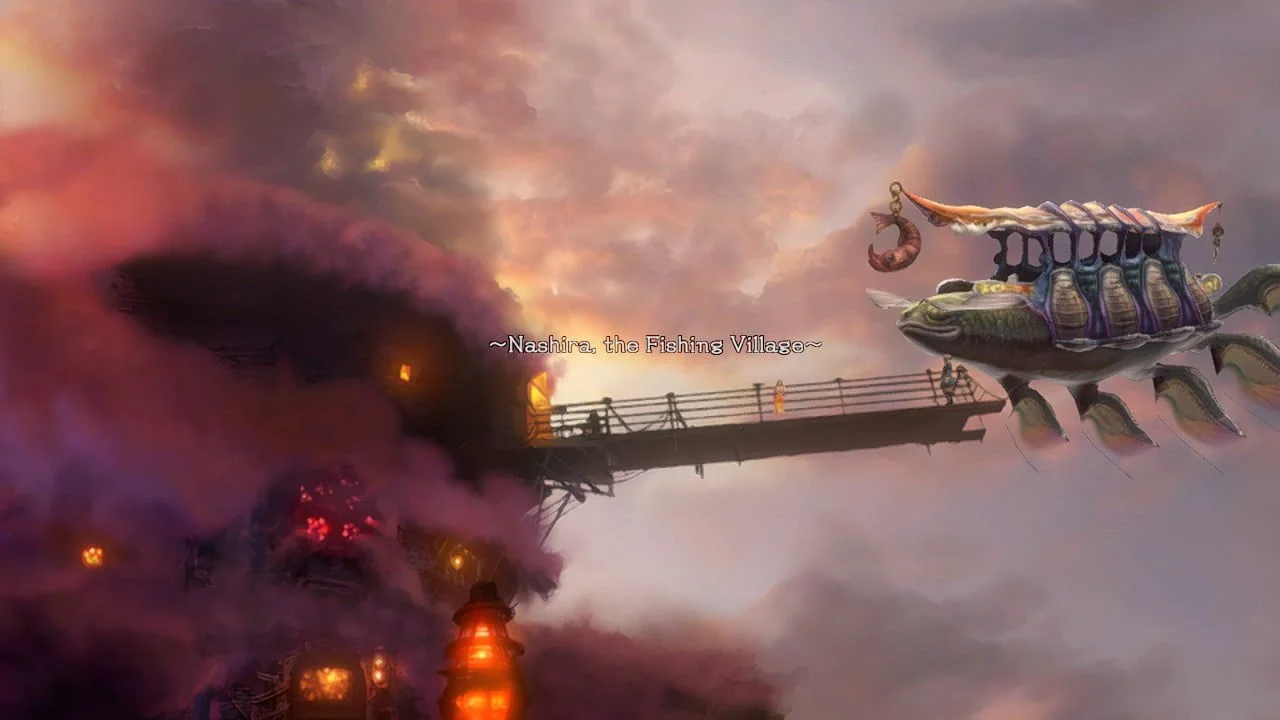
Baten Kaitos History
The first game, Baten Kaitos: Eternal Wings and The Lost Ocean (Baten Kaitos I), was originally released on the Nintendo GameCube way back in 2003 as a direct response to the lack of JRPG titles available on the system. Whilst it’s crazy to think now that Nintendo dropped the ball with that, you have to remember it was up against the JRPG behemoth known as the Playstation 2.
Releasing to positive reviews, Monolith Soft, the team behind Xenoblade Chronicles & Xenosaga, paired up with Tri-Crescendo, who would later work on Eternal Sonata, to create a sequel, Baten Kaitos: Origins (Baten Kaitos II). Origins was developed as a prequel, but saw several changes from the original game created by this dream team of developers.
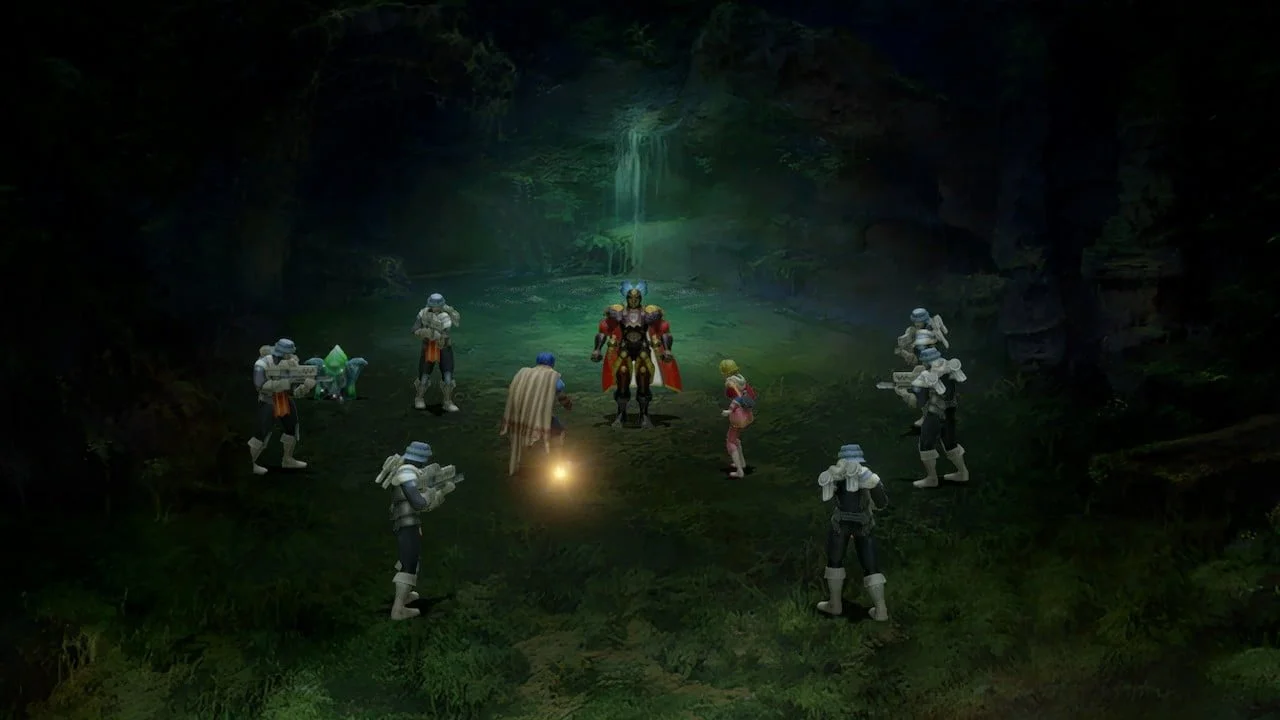
Baten Kaitos: Eternal Wings And The Lost Ocean
Baten Kaitos I sees our hero Kalas on a quest for revenge against the man who murdered his grandfather, aided by you. Yes, you play a part in this narrative. Kalas soon finds himself wings deep in a tale of deception, ancient evils, and copious amounts of soul searching.
The story progresses at a glacial pace. Even after hitting the 10-hour mark, not enough had been explained about the world, instead the focus is more on Kalas’ tale. It can be quite daunting, especially in comparison to later titles like Xenoblade Chronicles 3 in which the world and its rules are explained very early on.
Kalas isn’t your traditional JRPG hero. For a good chunk of the game he’s so absorbed with the goal of revenge that he has little time nor tolerance for anyone or anything, including you. You are given dialogue options at points to talk with Kalas, who at times tends to argue or question your responses.
When the story does raise the stakes and starts letting you in, the game does become much more engaging with a great cast of characters and some interesting lore. It’s just a shame it takes a while to get there as that could turn off some people, especially with Kalas’ less than award-winning personality.
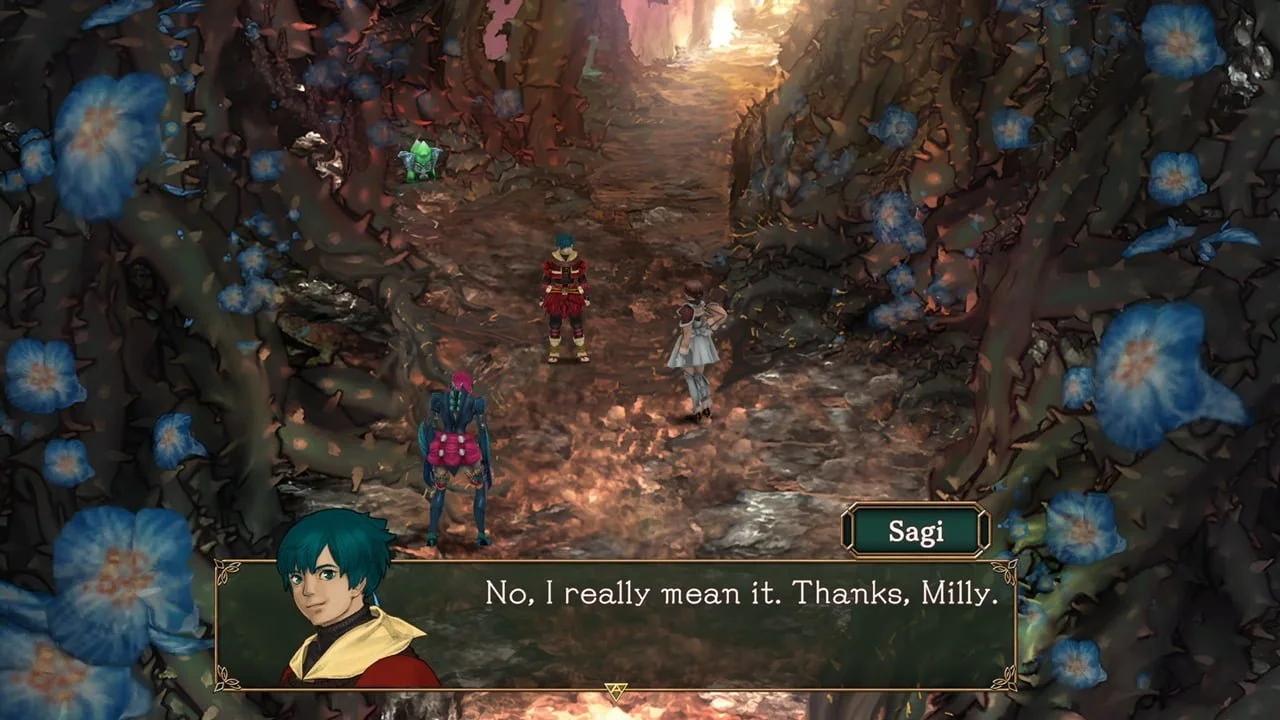
Baten Kaitos: Origins
Baten Kaitos: Origins (Baten Kaitos II) is set 20 years before the original game. The story follows a new protagonist, Sagi, as he tries to loosen the tyrannical grip the Empire has on the world, following a set up that sees our hero and his friends become public enemy number one.
Sagi is much more of a traditional protagonist than Kalas. The quirks come more in the form of some of the party members you meet, including one “brought to life puppet”. I didn’t enjoy Sagi’s story as much as Kalas’, but the original game feels more like a personal story whereas Origins is focused more on the grand narrative of Machine vs. Magic, giving both games a different feeling story.
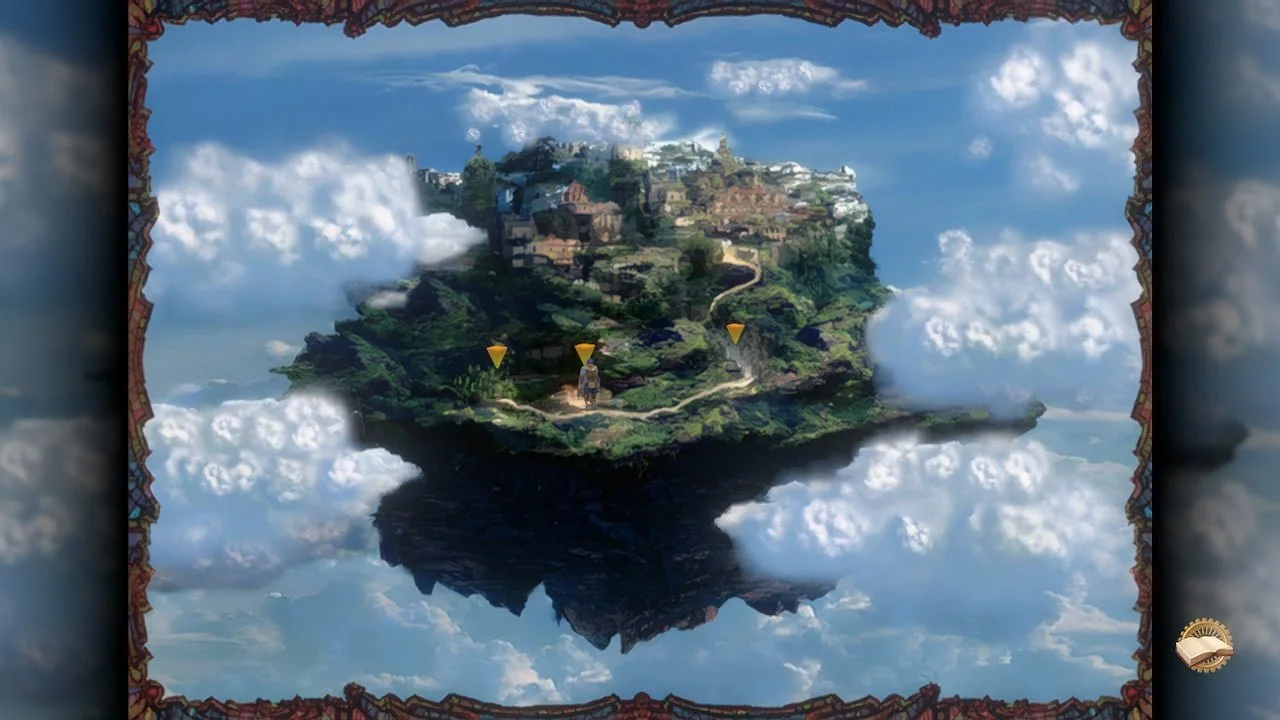
The World Of Baten Kaitos
Both titles bundled into Baten Kaitos I & II HD Remaster are traditional JRPGs. They’ve got the world map, smaller areas to explore, a plethora of dungeons to conquer, and a generally linear path through several smaller stories that eventually build to something bigger. The difference between Baten Kaitos and its peers is the assortment of quirky little differences that make it stand out. It’s almost like the developers knew they would have to battle for attention in two different eras of JRPG greatness. Fortunately, it manages to succeed more than it fails.
First of all, everything in the world of Baten Kaitos I & II HD Remaster comes in the form of cards. They aren’t called cards though, they’re “Magnus”. These Magnus range from serving as battle items, to health replenishment items, and even key items that will help you progress the main story or the side quests. The world of Baten Kaitos is one where you can carry fire or water in a card for use later. As I found out you can even carry a dead bird to give to a small child who seems oddly happy to receive the corpse.
This brings me to the juncture where we talk about the differences between the two games included in Baten Kaitos I & II HD Remaster. Whilst the main difference lies within the battle systems, there are also little things between the games that have been changed or omitted completely, creating two different experiences within the same world.
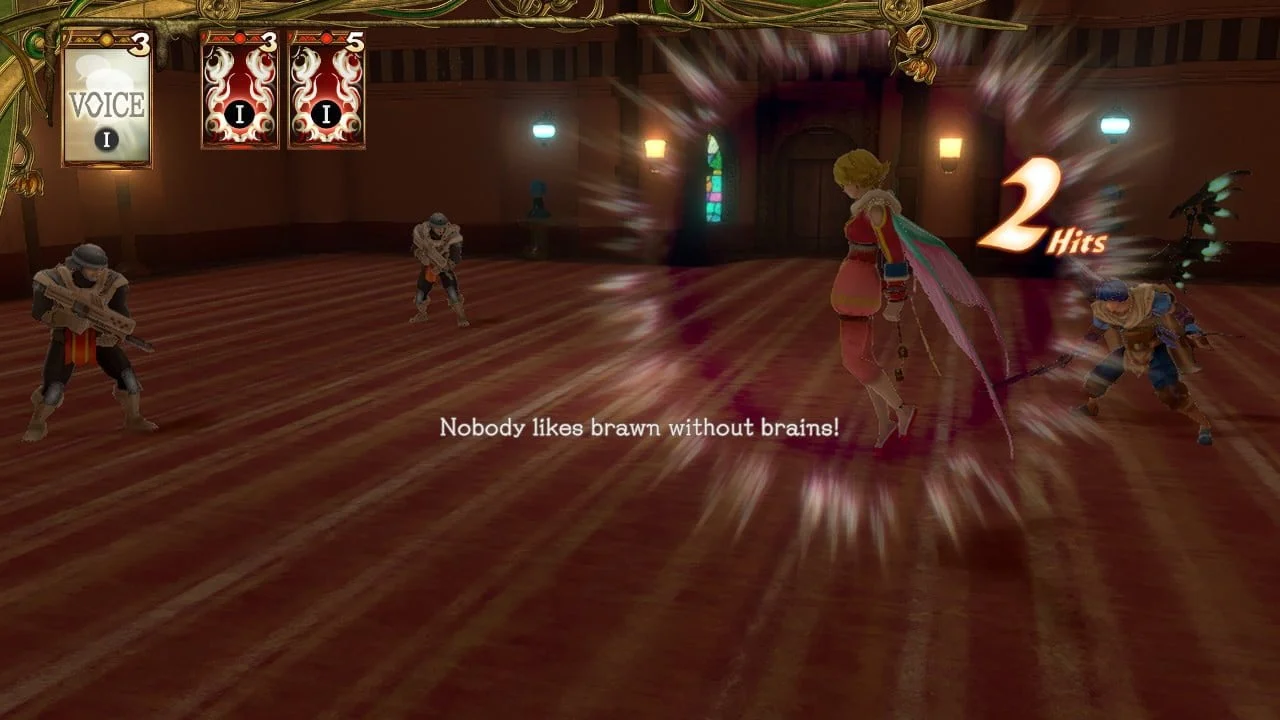
Baten Kaitos I Gameplay
The combat in the original game is a traditional turn-based system where your actions are decided through the cards you play in battle. There are attack and defense cards, and these can be played in their respective turns. The idea is that you balance your deck enough to fight, but also to be able to take a hit when and where it is needed. Items are used on the attack phase, which can catch you off guard as you can only target one unit at a time, and yes you can heal the enemy and I did it more than enough times!
There are further nuances such as combo moves which appear when you use certain cards that perform stronger attacks, and the “Spirit Number” on the cards if used in sequential order will get you more benefits from battle. The combat does continue to build and build, but much like the narrative it’s a slow burn and the fights can go on for quite some time. Throw in a bout of RNG with the cards you draw, and at times you can feel like the gods of luck are against you.
Money and leveling up are also given a little spin to make the game feel different. Enemies don’t drop money. The main source of income is using your camera card to take pictures of enemies during battle, and waiting a certain amount of in-game time for the pictures to develop before you offload them at the nearest Magnus shop.
You do accrue EXP as you fight enemies and eventually you’ll have enough to level up, but this isn’t done automatically. You’ll have to find a giant blue flower save point that will transport you to a church. Here you can then talk to a priest to level up, or “class up”, which allows you to hold more cards should you have the correct item to do so. Said item is usually found after a boss fight.
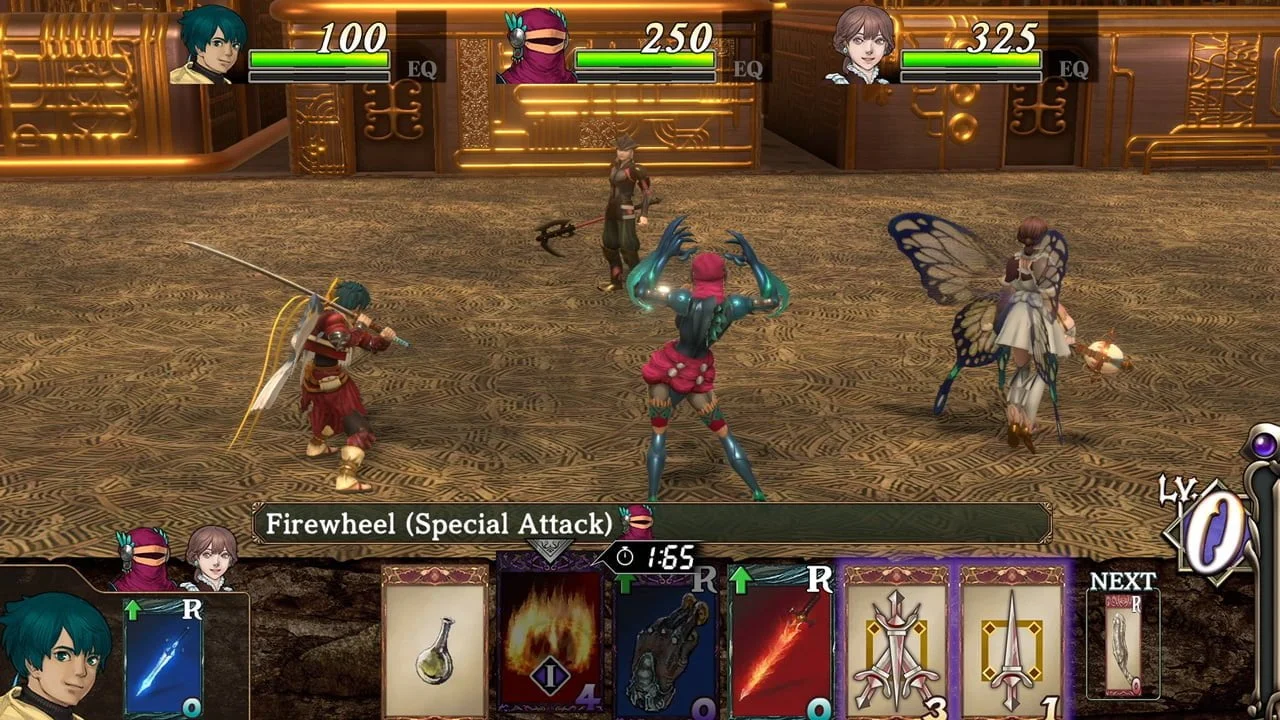
Baten Kaitos II Gameplay
The combat in Baten Kaitos Origins is a much faster affair, ditching the turn-based style of combat for a real-time system. This does wonders for the pacing of combat, and unlike the original there is no need to heal up after a battle. Each fight acts as its own independent encounter, and there is no worrying about making sure you’re fully healed afterwards on the off chance something else comes your way, health is fully replenished at the end of each fight.
There is a larger emphasis on combos in this combat system, and the cards are pulled for everyone at the same time rather than each character having their turns with their cards. Spirit Numbers also have a much larger impact here, where you use them in sequential order to keep your combo going instead of just being for post-battle bonuses.
Deck management is much stricter in Origins as you have to factor in that each character can only use a certain type of card. Sagi for example cannot use magic cards, so you need to make sure you have considered using every member of your party to their fullest to avoid dropping your combo early and seeing the untimely end of a fight.
Money is handled more traditionally in this title, being dropped at the end of fights rather than relying on you using your turn to take a photograph. This makes it feel a little more like a traditional RPG, and slightly more respectful of your time. Leveling up is the same beast as it was in the first game, so it still has that going for it.
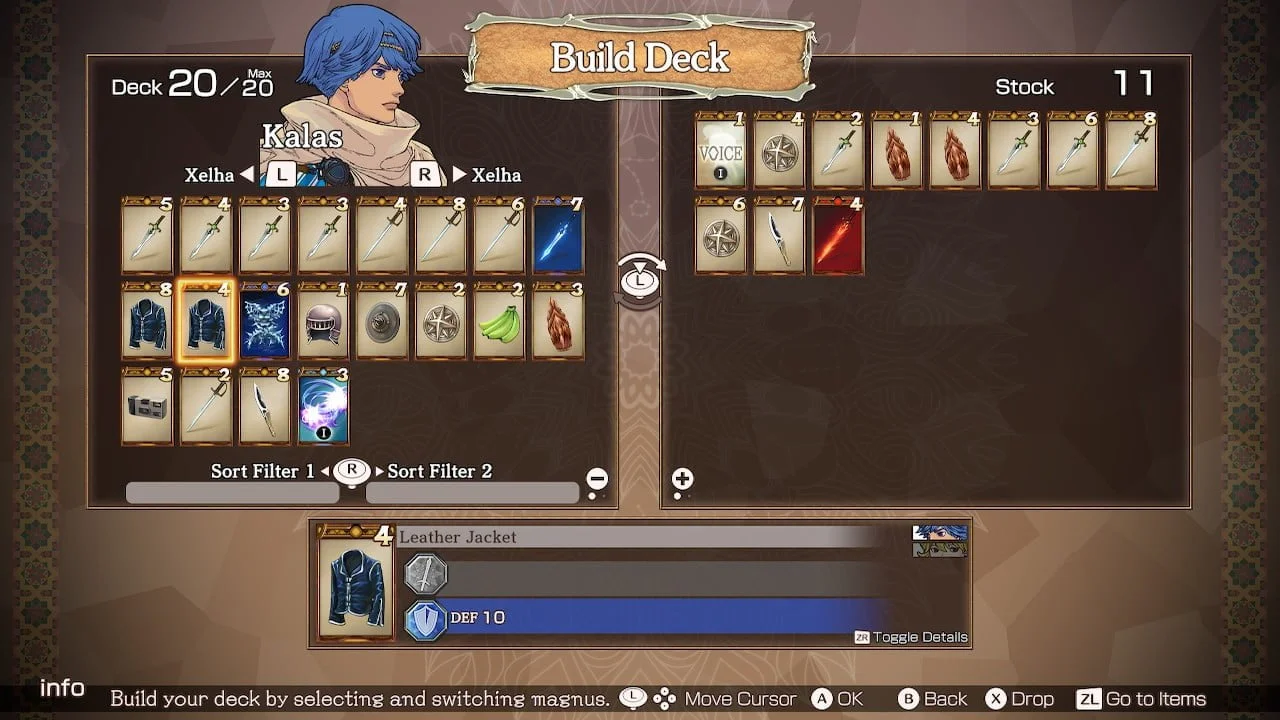
QoL & Pacing
I would say that for the two games included in the Baten Kaitos I & II HD Remaster collection, you should play them in order as the changes made to the combat and money in Origins mean the game doesn’t feel quite as slow as the first game. It certainly isn’t the slowest of games around, but it is very hard to go back to Baten Kaitos I after you’ve played its speedy successor.
There are a range of additional options and quality of life improvements in Baten Kaitos I & II HD Remaster to help with the aging process. The ability to turn off encounters is a god-send when backtracking, especially in Baten Kaitos I where everything takes an age. The instant K.O option makes enemies die in a single hit, you can enhance the game and battle speed up to 300%, simplify battle results, and also make use of an auto-battle feature. Some of these are clearly for people who just want to experience the story, but the speed and encounter toggles make backtracking much less of a chore for everyone. Using these options are a player choice and not forced in either game.
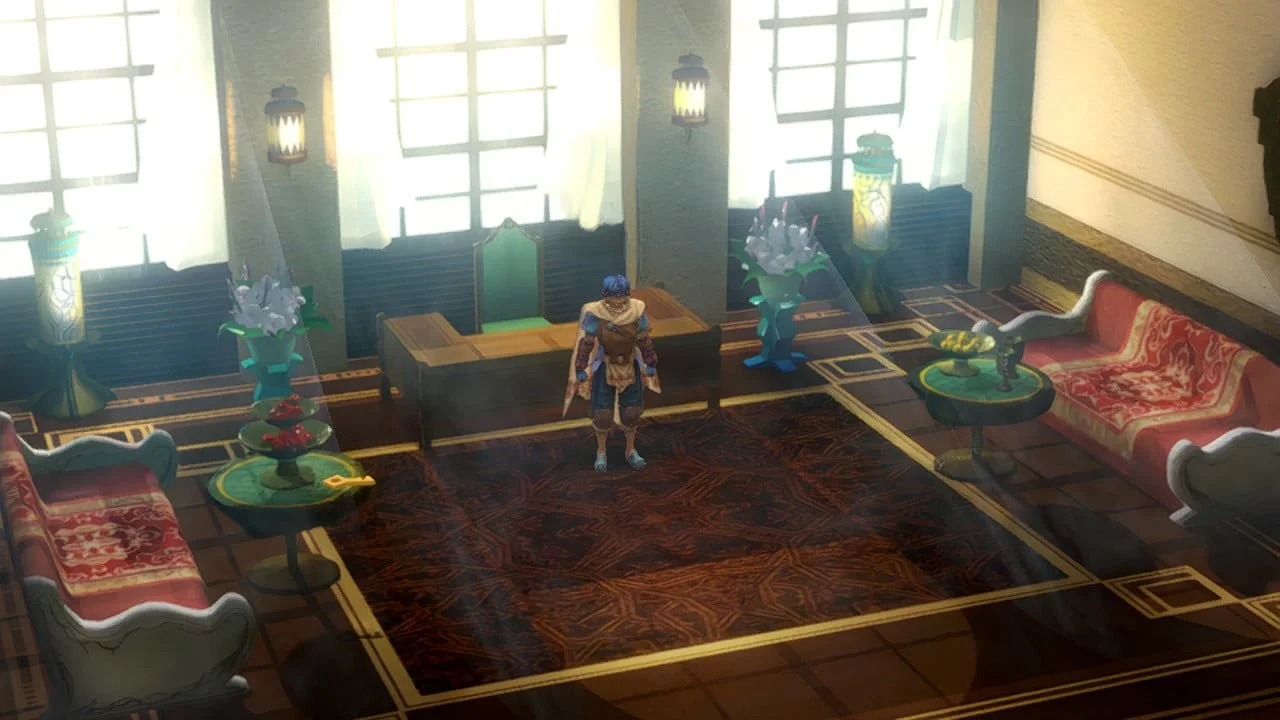
As A Package
As a package that’s it for additional content, which is a shame as I do love a good museum of concept art and the like. Those QoL features are a biggie though, and Baten Kaitos I & II HD Remaster does contain two amazing JRPG titles that run for around 40/50 hours each, meaning it wouldn’t be shocking to see players put over 100 hours into the package.
Both games feel like real gems from the golden era of JRPGs. Baten Kaitos I is the most aged of the two due to the slower pace, but it is still a top-tier experience when it gets going and you can always speed the battles up to help keep you engaged. Having never played either of the games before I almost feel like kicking myself for not doing so, but on the other hand there are now the tools to make both titles much more accessible and the portability of the Nintendo Switch is also a huge bonus.
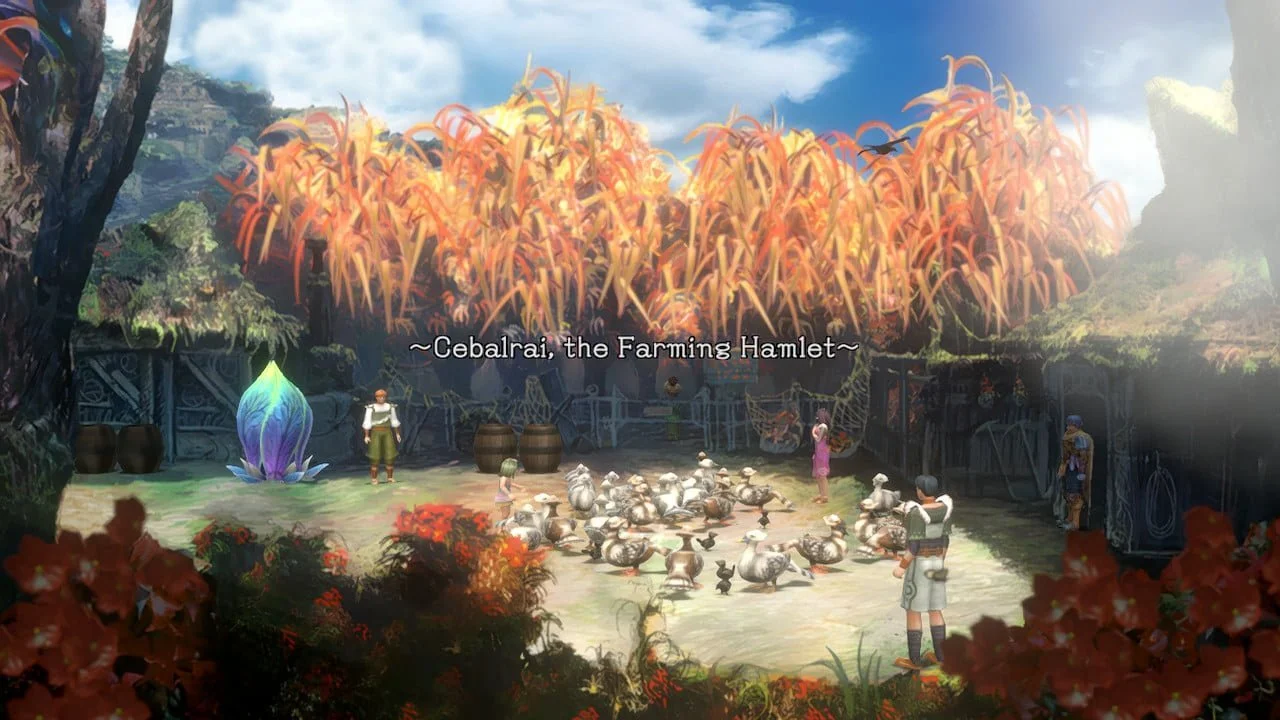
Visuals & Music
As far as graphics are concerned, Baten Kaitos I & II are on par with titles of its time like Final Fantasy X and the like. It’s curious that the games aren’t as well known as the title I just mentioned as I do genuinely feel that graphically they’re on the same level. It helps that the games have gorgeous art direction, and there are some genuine surprises between the two titles. You can see both of the developers specialties shine through in Baten Kaitos I & II HD Remaster.
The art direction hits harder in cutscenes and the backgrounds where the game looks like it has been painted. Vibrant colors and paint brush strokes litter the screen as you explore these deep fantasy worlds, including one that I fell in love with that was made with modeling clay. Every location has a unique feel, and playing the Baten Kaitos I before the sequel gives you the bonus of seeing places 20 years before your first exposure to them.
Baten Kaitos I & II are beautifully unique in their visual style. It feels like they lean so far into the traditional cliche JRPG style that they encapsulate the wonder and mystery of the genre as it got into its stride towards the middle of the SNES generation. Baten Kaitos is that outlandish at points that you just accept it because of how fantastical and vivid the world is.
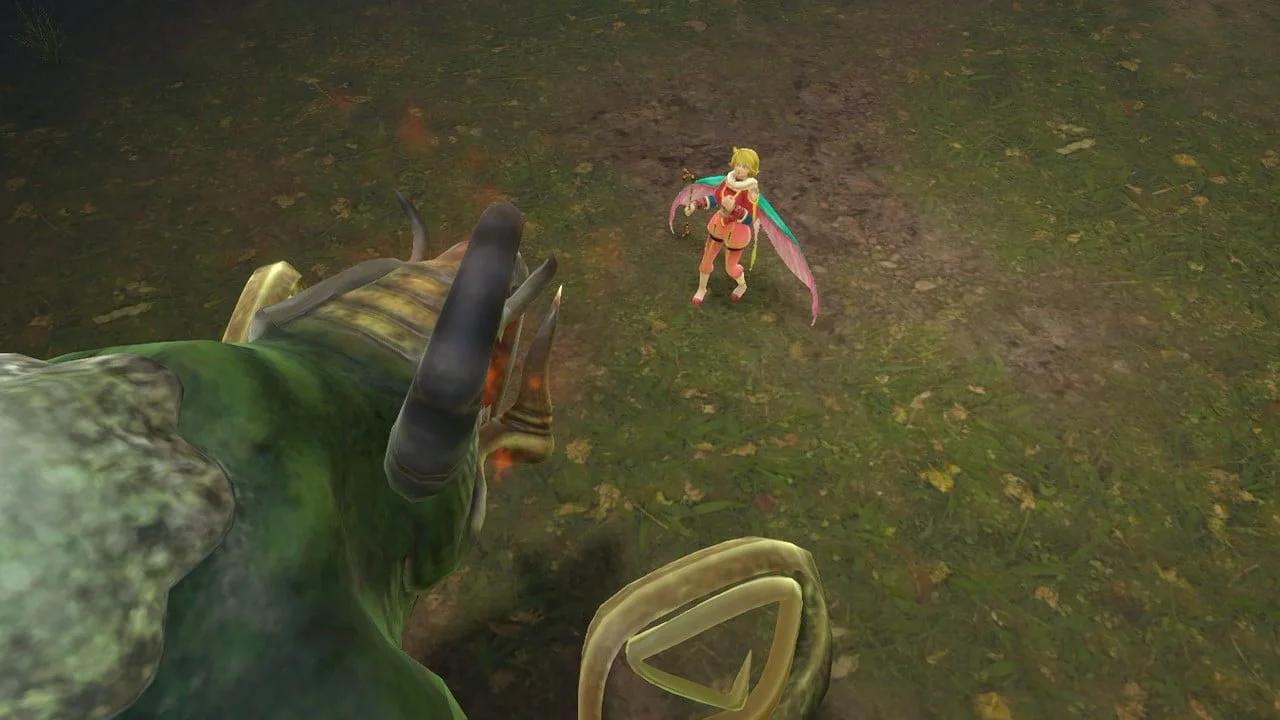
Baten Kaitos I & II HD Remaster sees the two games given an HD uplift in the character models and that slight Vaseline effect is present. It helps “modernize” the game, and fortunately the art direction is so strong that the blemish removal isn’t as detrimental as it has been in previous titles such as the Grand Theft Auto Trilogy, which was famously a trainwreck.
The music in Baten Kaitos I & II HD Remaster is about what you would expect from JRPGs, especially if you are familiar with the developer’s other titles. There is only a Japanese dub, which is a shame as the original game did have an English dub on the GameCube. Bizarrely, the intro for Baten Kaitos I is still in English which just outright confused me.
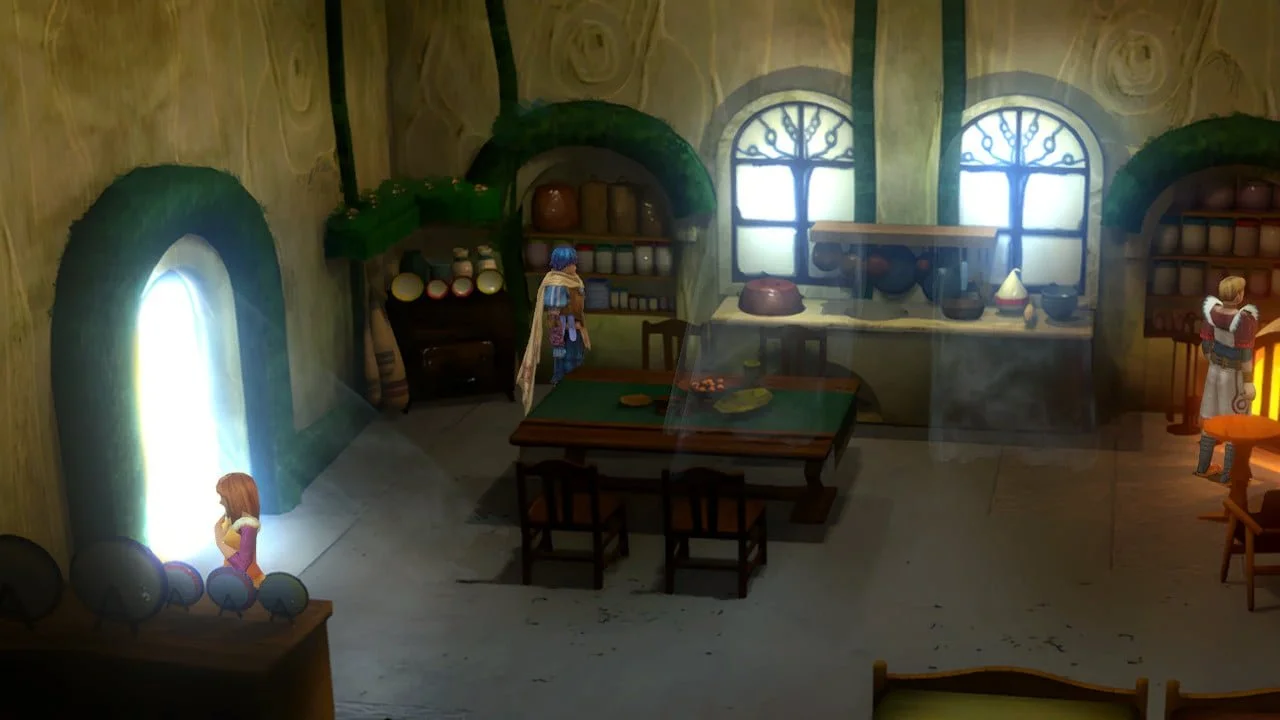
Verdict
As someone who hadn’t played these titles originally I was very apprehensive coming into Baten Kaitos I & II HD Remaster. These games have a cult following and you either haven’t heard of or played them, or you love them. There doesn’t seem to be a middle ground and I was worried they were overhyped or would have been outshined by more modern games.
I was wrong, Baten Kaitos I & II HD Remaster is quite possibly my favorite JRPG title of the year. The games feel, for the most part, just as fresh as they would have at release, and the QoL features help where some rust has gathered. Two genuinely forgotten gems that shine far too bright for the lack of exposure these games have had. I hope this package gives Bandai the nudge to greenlight Baten Kaitos 3. If you’re a JRPG fan and haven’t tried these titles before, you owe it to yourself to discover Bandai Namco’s best-kept secret.
BATEN KAITOS I & II HD REMASTER IS HIGHLY RECOMMENDED

Purchase: Nintendo Store
If you are looking for another JRPG, you should check out our review of The Legend of Nayuta: Boundless Trails.
Thanks to Bandai Namco for providing a Nintendo Switch review code for Baten Kaitos I & II HD Remaster.
Pride of utopia & greatest thing ever, I found the One Piece, Collected the Dragon Balls & won the Mortal Kombat Tournament in one night, it was quiet for me that night! Follow me on Twitter @powahdunk

